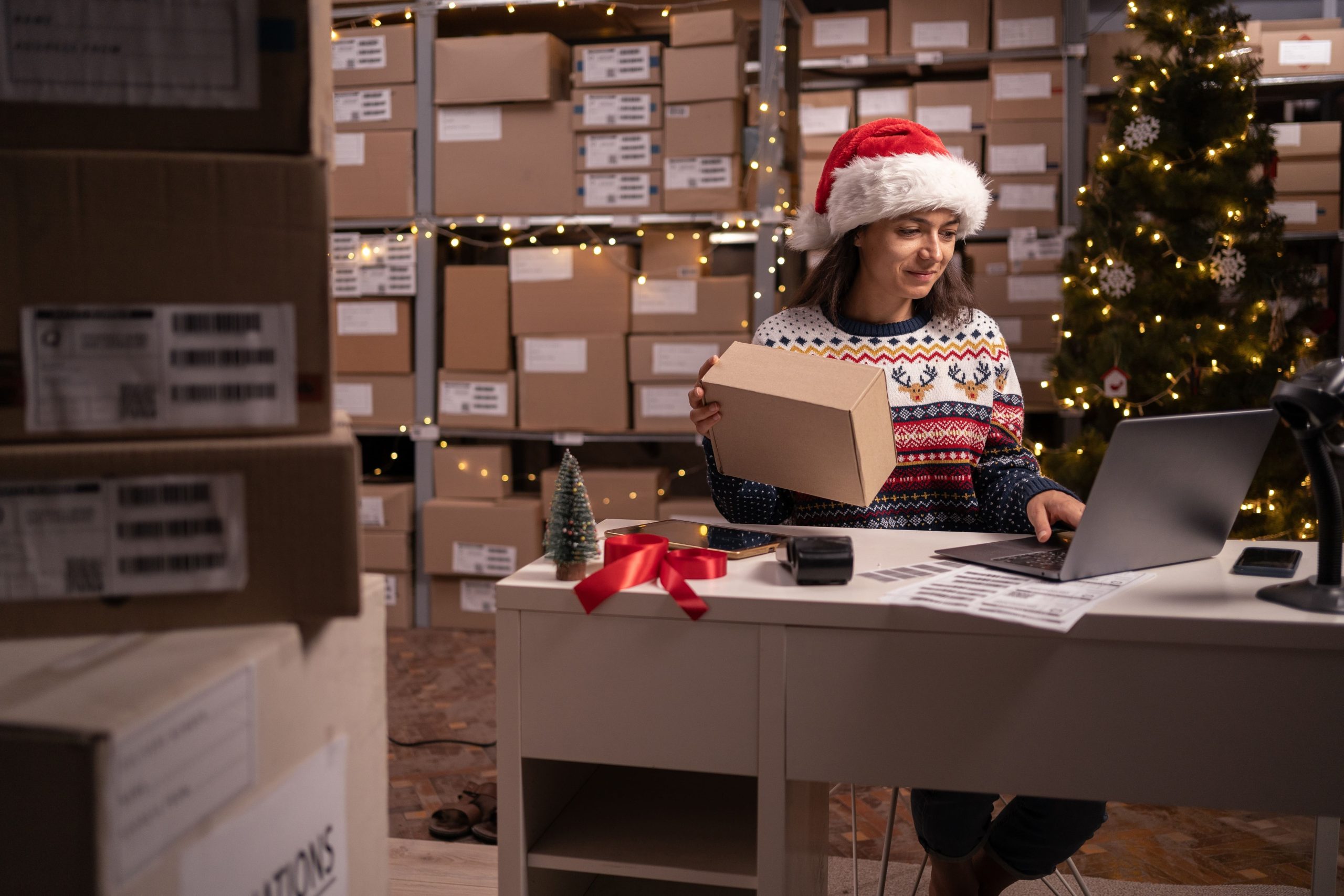The Most Common Holiday Shipping Mistakes and How to Avoid Them
- 9 December 2024
- 13 min to read
- 342 views

It was the week before Christmas, and John, the owner of a small eCommerce store, was feeling confident. Orders were pouring in, and his team was working overtime to get everything shipped out on time. But then, disaster struck. A customer emailed him in frustration. Their long-awaited holiday gift hadn’t arrived. John checked the tracking info and realized the package was "in transit" with no expected delivery date.
At first, he blamed the carrier. But after further investigation, it turned out the address was incorrect. A simple typo — one wrong digit in the zip code — had sent the package on a tour of the wrong city.
That one small error cost John more than just the price of re-shipping. It cost him the trust of his customer. They left a public review warning others about "unreliable shipping" from his store. One mistake, and suddenly his five-star reputation was tarnished.
This scenario isn't unique. Every year, thousands of businesses face similar situations. But the good news is, these mistakes are avoidable. With a bit of preparation and attention to detail, you can prevent holiday shipping headaches before they start. Let’s look at the most common holiday shipping mistakes — and, more importantly, how you can avoid them.
Through real-life stories, we’ll reveal the most common shipping mistakes, providing you with a clear understanding of their impact and practical steps to avoid them. Let’s look at the most common holiday shipping mistakes — and, more importantly, how you can avoid them.
Last-Minute Shipping Chaos
Sarah had planned everything. Her store had promoted a "Holiday Sale" starting in early November. Sales skyrocketed, and she was thrilled with the response. But with just five days left until Christmas, her team was overwhelmed. Customers were demanding same-day shipping, and suddenly, her well-oiled operation was in crisis mode.
The carriers were no help either. UPS and FedEx were dealing with record-breaking demand, and even "guaranteed" delivery dates weren’t being honored. Packages were delayed, tempers were rising, and Sarah’s inbox was flooded with messages from frustrated customers asking, "Where is my order?"
What went wrong?
Sarah didn't account for the "holiday shipping crunch" — the period when shipping carriers reach capacity and delays become unavoidable.
How to avoid it:
- Plan ahead and set a clear cut-off date for Christmas delivery.
- Communicate this deadline to customers on product pages, at checkout, and in email reminders.
- Offer incentives for early orders (like free shipping) to encourage timely purchases.
The Curse of Incorrect Addresses
Liam runs a small business that sells handmade candles. Most of his customers are thoughtful gift-givers who want to send packages to loved ones in other cities. Business was booming, but then the complaints started. "Package undeliverable" emails flooded his inbox. Some packages were sent back, others were lost. The reason? Customers had entered the wrong address at checkout.
It’s a simple mistake but a costly one. Carriers charge "return to sender" fees, and customers rarely understand that the problem started with their own input. For Liam, every returned package was a hit to his profit margin — and his reputation.
What went wrong?
His checkout system didn't have built-in address verification.
How to avoid it:
- Implement address verification at checkout to detect incomplete or incorrect addresses.
- Use an automated system that auto-suggests complete addresses as customers type.
- Allow customers to edit their shipping information for a short time after placing the order.
Flimsy Packaging, Expensive Returns
Rachel runs a gift shop specializing in delicate ceramic mugs. With holiday orders on the rise, she decided to save time by using thinner boxes to pack items faster. But she didn't anticipate one problem — the shipping journey. Packages are tossed around, stacked, and occasionally dropped. Customers began posting photos of broken mugs on social media with captions like, "Not what I expected to receive today." Rachel had to refund dozens of customers, and her profit for the season vanished.
What went wrong?
She prioritized speed over protection.
How to avoid it:
- Use strong, durable packaging materials (double-walled boxes, bubble wrap, and air cushions).
- Conduct "drop tests" to see if your products can survive the shipping process.
- Label packages as "fragile" but never rely on the sticker alone — make sure the internal packaging is strong enough to handle rough handling.
The Customs Clearance Trap
When Oliver’s online store received an influx of international orders, he was thrilled. More customers, more revenue. But then, the delays started. Packages bound for international customers were held at customs. Customers were emailing him, demanding answers. "Why is my package stuck at customs?"
The problem? Customs officials required more detailed product descriptions and proper HS codes. But Oliver didn't have experience with international logistics, and now his packages were stuck in limbo. His international customers were not happy.
What went wrong?
He failed to comply with international customs regulations.
How to avoid it:
- Use shipping services that offer Delivered Duty Paid (DDP) options.
- Double-check that all customs paperwork is filled out properly (product descriptions, HS codes, invoices).
- Partner with a logistics provider with experience in cross-border shipping (like Meest International) to avoid mistakes.
No Shipping Insurance — Big Risk, Big Loss
When Ethan’s store shipped out 500 premium gift baskets to VIP clients, he felt unstoppable. Business was growing, and his clients were loyal. But one stormy week, a massive snowstorm hit, and 45 of his shipments were delayed or lost. Many of his high-value packages were never found, and he had to refund customers thousands of dollars.
He learned the hard way that without shipping insurance, you bear the full financial risk of lost or damaged packages.
What went wrong?
He didn’t protect himself from the unpredictable nature of shipping.
How to avoid it:
- Get shipping insurance, especially for high-value orders.
- Work with logistics providers that offer insurance as part of their shipping plans.
- Be transparent with customers about the option to protect their package with insurance at checkout.
How to Avoid These Mistakes (and Protect Your Profits)
Now that you know the risks, how do you avoid them? Here’s a simple plan:
- Plan Early: Start your shipping prep months in advance.
- Automate: Use address verification and shipping automation to avoid manual errors.
- Package Properly: Use durable materials and label packages as "fragile" when needed.
- Protect with Insurance: Insure high-value shipments to avoid unexpected costs.
- Partner with Experts: Logistics providers like Meest International can help you handle customs, tracking, and international shipping issues.
What Happens When You Get It Right?
For businesses like John's, Sarah's, and Rachel's, getting shipping right means:
- Fewer customer complaints — fewer support tickets, refunds, and replacement costs.
- Happier customers — happy customers leave positive reviews, which build brand trust.
- Better profit margins — you avoid unnecessary expenses from returns, fees, and lost packages.
Your Next Step
Don’t let small shipping mistakes ruin your holiday season. Learn from the experiences of other business owners, and be proactive. The right logistics partner can make a world of difference.
Need help with your holiday shipping strategy?
Meest International specializes in shipping solutions that avoid delays, customs issues, and last-minute chaos.
Request a consultation today and take control of your holiday shipping.




